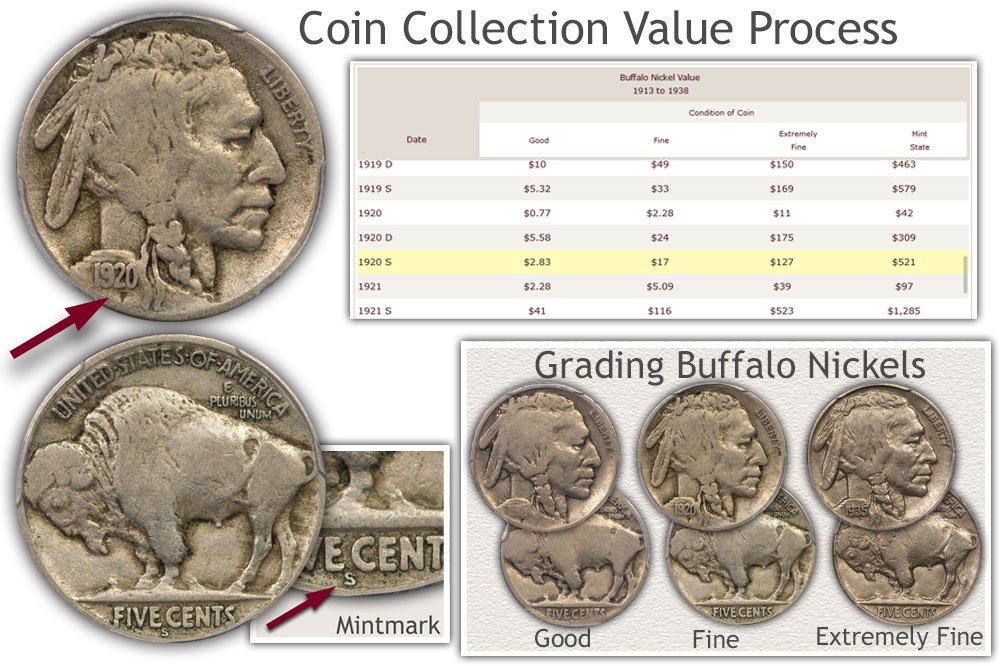Have you ever wondered how much your old coins are worth? Or maybe you’re looking to start coin collecting and want to know how to grade your coins? Well, you’re in luck because we’ve got a comprehensive guide on coin grading and valuation!
Grading your coins
The first step to determining the value of your coins is to grade them. Grading refers to the process of assigning a numerical grade to a coin based on its condition and overall appearance. There are many different grading scales out there, but one of the most widely used is the Sheldon Scale.
The Sheldon Scale goes from 1 to 70, with 1 being the lowest grade (a coin that is barely recognizable as such) and 70 being the highest grade (a coin that looks as good as the day it was minted). The grades in between reflect varying degrees of wear and damage, with each grade representing a specific level of preservation.
 It can be tricky to accurately grade a coin, especially for beginners. The key is to look closely at the details of the coin, such as the design, the date, and the lettering. If the coin has been circulated, it will likely show some signs of wear, such as scratches, dents, or discoloration. However, even uncirculated coins can have flaws, such as bag marks or toning, which can affect their grade.
It can be tricky to accurately grade a coin, especially for beginners. The key is to look closely at the details of the coin, such as the design, the date, and the lettering. If the coin has been circulated, it will likely show some signs of wear, such as scratches, dents, or discoloration. However, even uncirculated coins can have flaws, such as bag marks or toning, which can affect their grade.
 If you’re having trouble grading your coins, don’t despair – there are many resources available to help you. Some of the best include online guides, books, and forums where you can ask questions and get advice from experienced collectors.
If you’re having trouble grading your coins, don’t despair – there are many resources available to help you. Some of the best include online guides, books, and forums where you can ask questions and get advice from experienced collectors.
Valuing your coins
Once you’ve graded your coins, the next step is to determine their value. This can be a bit more complicated than grading, as there are many factors that can affect the worth of a coin.
One of the biggest factors is rarity. Coins that were produced in smaller quantities are generally more valuable than those that were widely circulated. This is because collectors are willing to pay a premium for coins that are harder to find. Other factors that can affect value include historical significance, condition, and demand among collectors.
 To get an idea of how much your coins are worth, you can use online resources such as price guides or auction sites. However, keep in mind that these prices can vary widely depending on many factors such as the grade and rarity of your coins.
To get an idea of how much your coins are worth, you can use online resources such as price guides or auction sites. However, keep in mind that these prices can vary widely depending on many factors such as the grade and rarity of your coins.
Should you get your coins graded?
If you’re serious about coin collecting and want to get the most accurate value for your coins, you may want to consider having them officially graded by a professional grading service. These services use strict standards to assign a grade to your coins, which can help you get a more accurate idea of their worth.
However, getting your coins graded can be expensive, and it’s not always necessary. If you’re just starting out with coin collecting or have a small collection, it may be more cost-effective to use online resources to grade and value your coins.
In conclusion
Coin collecting can be a fascinating and rewarding hobby, and grading and valuing your coins is an important part of the process. Whether you’re a beginner or an experienced collector, there are many resources out there to help you get the most out of your collection.
So what are you waiting for? Start grading and valuing your coins today!